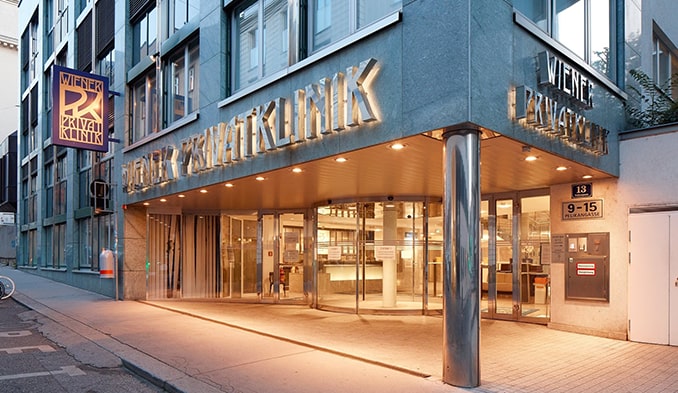-
What is the nature of Hirschsprung's disease?
Hirschsprung's occurs mainly in children. Its essence is that the nervous motility of the intestines of patients suffering from it does not function properly due to a genetic disorder. It occurs in approximately one in 5 thousand newborns, affecting boys more often. The cause of the condition is that ganglion cells were absent in part of the intestine during fetal development and as a result they are missing. That section of the intestine which has not been colonized by the cells is organic in its extension, and the propulsive peristaltic waves necessary to move food through the intestine are lacking in sufficient quantity.
Typically, Hirschsprung's disease affects the rectum and can be seen in 2 forms - "short" and "long". In the former, only the distal parts of the rectosigmoid (rectum) are affected, while in the latter, which is seen significantly less frequently, the colon is affected entirely.
In the typical clinical picture of the condition, the absence of the recto-anal reflex is also observed. This means that the internal sphincter does not open automatically when the need to defecate arises, as well as the functional narrowing of the anal canal called "anal sphincter achalasia". The impaired stool flow can lead to the development of serious inflammation in the intestine called enterocolitis. If appropriate measures are not taken and Hirschsprung's disease is not treated, life-threatening situations can occur.
-
What are the typical signs of the disease?
Usually, in a newborn with Hirschsprung's disease, up to 48 hours after birth, the presence of constipation with delayed emptying of the meconium (the first stools of the newborn) and serious obstructions in the permeability of the intestine is noted. These symptoms can be pronounced and a swollen abdomen and greenish vomiting can be observed. In cases where an intestinal tube is inserted to cover the area of the affected rectum, emptying of the bowel becomes "explosive".
-
What can you share about the diagnosis?
Diagnosis involves a contrast enema of the colon one prior to evacuation of the bowel (unprepared diagnostic irigoscopy). The examination shows a typical picture with a narrow rectum of the conical transition zone and an enlarged, stool-filled bowel, i.e., regularly populated with ganglion cells. The still valid diagnostic "gold standard" is the histological biopsy specimen of the intestinal wall, which shows missing ganglion cells and only very pathologically thickened bundles of nerve fibres. In addition, rectal manometry may show the absence of a rectal reflex.
-
What are the possible complications of Hirschsprung's disease?
About ½ of those affected develop enterocolitis, a condition representing severe inflammation of the intestines. It may be accompanied by both toxic paralysis of the bowel and life-threatening sepsis. In the areas of the intestine enlarged by stool, an increased population of pathogenic bacteria is noted, such as:
- Clostridium difficile,
- aureus,
- anaerobes,
- coliform bacteria,
- rotaviruses.
High fever appears as an additional symptom in these cases. In order to prevent these complications, it is recommended that the non-functioning aganglionic segment be surgically removed. Patients who have undergone previous surgery have an increased risk of developing enterocolitis if new stool stasis results from unfavorable surgical technique.
-
Is Hirschsprung's disease associated with genetic changes?
This condition is associated with complex genetic alterations. RET is the most important gene identified with a mutation. Other mutations in at least six different genes are also important in this disease. The genetic basis of the disease is extremely complex and the presence of different gene mutations does not necessarily guarantee the development of the disease itself. Also, not all individuals with mutations exhibit symptoms of the disease. As an isolated disease, Hirschsprung's disease is found in about 90% of cases, while 7-10% of patients in a family already have a diagnosed case. Unfortunately, no measures for prevention from the disease are currently known.
-
What methods are used for treatment?
In order to achieve treatment success for Hirschsprung's disease, a colostomy (temporary artificial removal of the bowel) may be necessary. in addition to aids for bowel evacuation and irrigation. This is done in order to remove areas of the bowel that are not functioning by surgery, and thus to ensure regular and normal bowel movements. It is essential to connect the healthy section of bowel close to the anal canal, performing a colonic anastomosis. To date, it is not necessary to open the abdomen. The procedure is performed minimally invasively through the anus.
To preserve the anoderm of the anus, it is important that the anastomosis be close to the anal canal. Locating the anastomosis superiorly, leaving a few centimetres of the affected bowel above the anal canal, significantly increases the risk of enterocolitis. This also leads to the occurrence of postoperative recurrent constipation. This is because the diseased part of the bowel resists the healthy bowel, but the healthy bowel cannot overcome its resistance. In addition, the relaxation reflex is absent in internal sphincter muscles. Intramuscular injections of botulinum toxin can be used for treatment. This can be administered intermittently over several months. In the past, an alternative treatment has been to perform a sphincter myotomy (splitting of the internal sphincter muscle), but at the same time this procedure results in a decrease in fecal continence.




